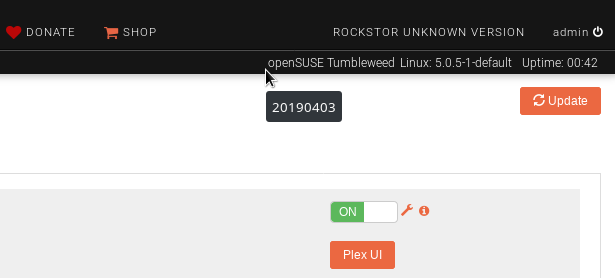@vfrex Welcome to the Rockstor community and thanks for the encouragement. I’ll pop in an update while I’m here.
Yes we are making progress, bit by bit, and my latest source build a few days ago found a couple of breaking upstream changes on postgres and docker but we have a work around for both, the upstream postgresql issue work around was added to our already referenced openSUSE dev notes and status, thanks to @jcdick1’s recent experiments along the same lines, and the docker change/workaround is documented in the following issue opened at that time:
https://github.com/rockstor/rockstor-core/issues/2032
Just need to rename a file for now and docker is back up and running again.
All rather alpha at the moment but if you are interested in building from source it is possible:

and we have provision in place to transition sufficiently current source built installs over to rpm installs once we have the back-end infrastructure in place to distribute them: closely related to my ongoing task re Rockstor as it goes. Just note that source installs have no provision for updating as they necessarily wipe the settings db (postgres) on each build: given in development there is no set point from which to establish db migration points.
Hope that helps and if you do fancy having a go consider contributing to @jcdick1 recent thread on installing via source build on Tumbeweed as that is the current forum focus point for difficulties in that area. I’m trying to keep this thread for development progress reports.